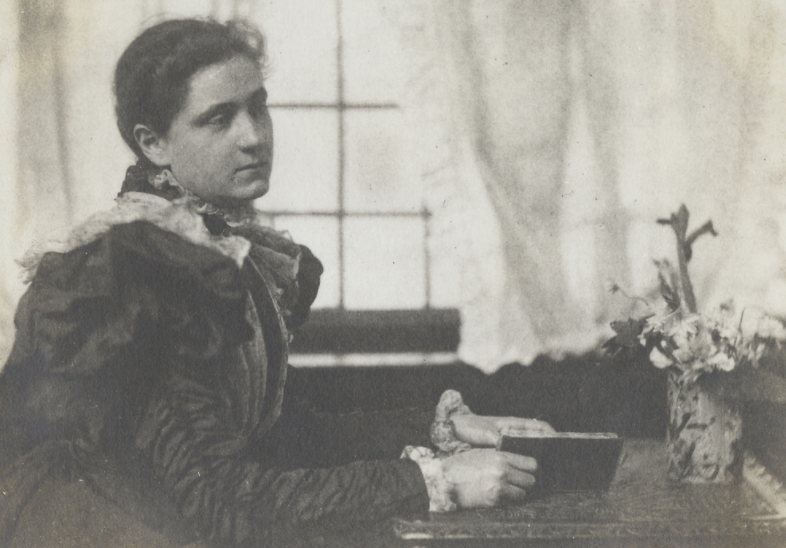Who was Ellen Gates Starr?
/Ellen Gates Starr co-founded Hull-House with Jane Addams in 1889. Born in rural Illinois, she was influenced by her reformist father, Caleb Starr, who advocated for the abolition of slavery, collective farming, and women's rights. Starr met Addams at Rockford Female Seminary (now Rockford University). Due to her family’s modest income, Starr studied only one year before becoming a teacher in progressive schools and moving to Chicago. Her female students at The Kirkland School, and their parents, formed a circle of admirers and financial donors who made it possible to launch the Hull-House a decade later. Throughout her varied career, Starr remained a brilliant, innovative educator. She partnered with Addams to establish the settlement house in Chicago out of a shared sense of mission. Starr and Addams were lifelong friends despite differences in background and temperament, sharing a desire to find meaningful work beyond traditional women’s roles.
Ellen Gates Starr looking out a window at hull-House. She is holding a book she bound herself. ND. (Jane Addams Memorial Collection)
Starr’s initial focus at Hull-House was on artistic, literary, and cultural experiences for immigrants from the surrounding neighborhoods. Starr was instrumental in deciding that the first addition to the Settlement complex would be the Butler Art Gallery. There Hull-House neighbors and a broader, interested public could view exhibitions and take art classes together. She organized reading groups, taught classes, and led field trips to the new Art Institute of Chicago. In 1895, Starr introduced Art History as a course at the famous Chautauqua Institution, in New York State, where it is still part of the program. In 1897, Starr was a founder of the Chicago Arts and Crafts Society, which met regularly at Hull-House. Starr was instrumental in cultivating an active arts ecosystem at Hull-House by hosting different art leaders for lectures like Frank Lloyd Wright and his 1901 lecture “The Art and Craft of the Machine”.
Starr, Jane Addams, and contemporary reformers believed that industrialization had alienated workers from their creativity and dignity. Strongly influenced by English social thinkers, John Ruskin and William Morris, both pioneers of the Arts and Crafts Movement, Starr and Addams viewed artistic objects as the by-product of labor conducted in freedom and with self-respect. From the 1880s through the 1920s, Starr traveled extensively and maintained vital collaborative friendships with leading social reformers on both sides of the Atlantic. In this spirit, in 1899, Starr started the Hull-House Bookbindery, after completing a lengthy apprenticeship in London to learn the exacting craft at the center of the movement. She decorated leather-bound books she believed had lasting literary and social value. Chief among these were important books authored by Jane Addams. She trained both amateur and professional book artists, who exhibited nationally.
For Starr, art was integrated with, not at odds with, efforts to eradicate the harsh living and working conditions that stifled human fulfillment among her neighbors. She became a passionate labor activist and helped organize the Illinois branch of the National Women's Trade Union League. She protested police brutality and convinced wage-earning women and men to join her. Increasingly anti-Capitalist, Starr joined the Socialist Labor Party of Chicago in 1911. In 1916, Starr ran for alderman of the Nineteenth Ward, in part to test the new state laws for women voters. She did not win but used the campaign to raise awareness about social injustice in the Hull-House neighborhood.
A devout religious seeker all her life, Starr changed Christian affiliations several times and was also interested in Eastern religions. She was a leading member of the national Episcopalian women’s Social Gospel organization, the Companions of the Holy Cross, for more than 20 years. Finally, she joined the Roman Catholic Church in 1920. She was influential in the liberalizing Catholic Liturgical Movement and remained active in petition campaigns and social causes into old age. After a spinal operation in 1929, she was unable to live without aid. She spent her last weeks in Chicago with friends in Hyde Park. She lived for a while in New York City. In 1932, Starr retired to a convent in Suffern, New York, where she became a secular Oblate of St. Benedict. She died in 1940 at the age of 80.
Check out our 2018 Panel on the Influence of the Hull-House Bookbindery and Ellen Gates Starr on our YouTube Channel


